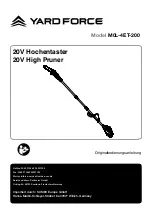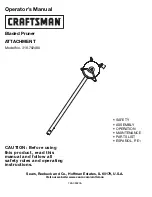
28
GB/MT
Safety instructions for handling batteries
1
Always make sure that the batteries are inserted
with the correct polarity (+ and –), as indicated on
the battery.
2
Do not short-circuit batteries.
3
Do not charge non-rechargeable batteries.
4
Do not overcharge batteries!
5
Do not mix old and new batteries or batteries of
different types or manufacturers! Replace an entire
set of batteries at the same time.
6
Immediately remove used batteries from the device
and dispose of them properly!
7
Do not allow batteries to heat up!
8
Do not weld or solder directly on batteries!
9
Do not dismantle batteries!
10
Do not allow batteries to deform!
11
Do not throw batteries into fire!
12
Keep batteries out of the reach of children.
13
Do not allow children to replace batteries without
supervision!
14
Do not keep batteries near fire, ovens or other sour
-
ces of heat. Do not use batteries in direct sunlight
or store them in vehicles in hot weather.
15
Keep unused batteries in the original packaging
and keep them away from metal objects. Do not
mix unpacked batteries or toss them together! This
can lead to a short-circuit of the battery and thus
damage, burns or even the risk of fire.
16
Remove batteries from the equipment when it will
not be used for an extended period of time, unless
it is for emergencies!
17
NEVER handle batteries that have leaked without
appropriate protection. If the leaked fluid comes into
contact with your skin, the skin in this area should be
rinsed off under running water immediately. Always
prevent the fluid from coming into contact with the
eyes and mouth. In the event of contact, please seek
immediate medical attention.
18
Clean the battery contacts and corresponding
contacts in the device prior to inserting the batteries.
m
residual risks
the machine has been built according to the state of
the art and the recognised technical safety require-
ments. However, individual residual risks can arise
during operation.
•
Health hazard due to electrical power, with the use of
improper electrical connection cables.
•
Furthermore, despite all precautions having been met,
some non-obvious residual risks may still remain.
•
Residual risks can be minimised if the „safety instruc-
tions“ and the „Proper use“ are observed along with
the whole of the operating instructions.
•
Do not load the machine unnecessarily: excessive
pressure when sawing will quickly damage the saw
blade, which results in reduced output of the machine
in the processing and in cut precision.
•
When cutting plastic material, please always use
clamps: the parts which should be cut must always
be fixed between the clamps.
•
Avoid accidental starting of the machine: the opera-
ting button may not be pressed when inserting the
plug in an outlet.
•
Use the tool that is recommended in this manual.
In doing so, your mitre saw provides optimal perfor-
mance.
•
Hands may never enter the processing zone when the
machine is in operation. Release the handle button
and switch off the machine prior to any operations.
commissioning
Prior to commissioning, observe the safety instruc-
tions in the operating instructions.
reMOVaL FrOM tHe PacKaGInG
Remove the machine from its package, which protects it
during transport, without damaging the package in order
to be able to use it later for transporting the mitre saw for
long-term storage.
MOVInG
Since the mitre saw is relatively small and light, its lo-
cation can be easily changed, even by a single person.
After locking the locking knob (26 - Fig. 4) in the bottom
position, lift the mitre saw by the handle (2 - Fig. 4).
tranSPOrt
If the machine must be transported, carry it by the hand-
le (2 - Fig. 4) and place it in the original packaging in
which it was supplied. In the process, make sure that it
is correctly positioned in the package (see arrows on the
package).
If possible, the load should be fixed with ropes or secu
-
ring belts in order to prevent shifting during the transport
or parts of the load from falling down.
POSItIOnInG/WOrK StatIOn
Position the machine on a work bench or on a flat base
so that the machine is supported as stably as possible.
When working with the machine, ergonomic factors
must be considered; the ideal height of the work table
or the base is reached when the base surface or the up-
per work surface is 90 to 95 cm above the ground. The
positioning of the machine must provide for at least 80
cm of clearance in all directions and in order to allow for
cleaning and repair work as well as necessary adjust-
ments in observance of safety conditions and with suf-
ficient room to manoeuvre.
caUtIOn:
Position the machine in a zone which is
suitable in respect to the environmental conditions and
lighting. Never forget that the general environmental
conditions play an extremely important role in accident
prevention.
cOnnectIOn tO tHe POWer SUPPLY
Make sure that the socket is in a good condition. We
would like to remind you that the power supply must be
connected to a magnetic-thermal circuit breaker which
protects all lines from short-circuits and overloading.
Содержание PKS 1500 A1
Страница 5: ...Fig 4 2 3 27 26 1 Fig 5 28 29 6 Fig 6 30...
Страница 50: ......
















































